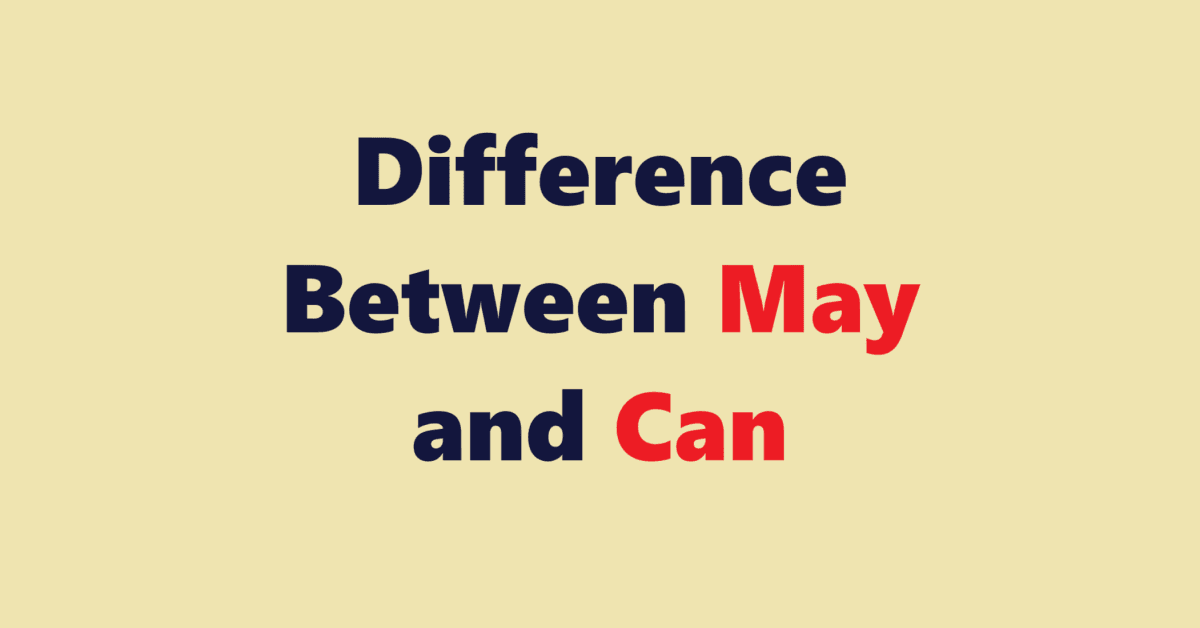Understanding the differences between “may” and “can” is crucial for clear communication, yet these terms often confuse both learners and fluent speakers of English. While both words express possibility or permission, they have distinct roles and meanings. This blog post will explain their differences, using simple definitions, relatable examples, and practical tips to help readers use them correctly in everyday conversations.
Definitions
Can
The verb “can” primarily expresses ability or capability. For example, someone might say, “I can swim,” to indicate they are able to perform that action. “Can” is also used informally to convey permission, though this usage is more common in conversation than in formal writing.
Examples of Ability:
- Physical Ability: “She can swim very well.”
- Mental Capability: “He can solve complex equations with ease.”
Examples of Informal Permission:
- Permission in Conversation: “You can borrow my book if you want.”
- Casual Setting: “Can I go to the party tonight?”
May
Conversely, “may” is employed to denote formal permission, such as when someone is given permission to leave a meeting by saying “You may go now,” compared to informal permission, which might simply use “can.” Additionally, “may” is used to express a possibility or hypothetical situation, like saying “You may face challenges if you take this route,” indicating a likelihood rather than certainty. “May” carries a more respectful tone than “can,” making it suitable for formal writing or polite requests.
Examples of Formal Permission:
- Formal Setting: “You may leave the room once you finish the test.”
- Polite Permission: “May I use your phone, please?”
Examples of Possibility:
- Possible Events: “It may rain later this afternoon.”
- Hypothetical Situations: “If the project is approved, it may lead to significant changes.”
Contextual Differences
The distinction between “may” and “can” becomes more pronounced when considering the context in which each term is used.
1. Ability vs. Permission
The fundamental difference lies in their primary functions. “Can” is dedicated to showcasing ability, while “may” focuses on permission. Understanding this core differentiation will enhance clarity in communication.
- Ability Example: “Tom can ride a bike.” (indicating Tom’s capability)
- Permission Example: “Tom may ride his bike in the park.” (indicating allowance)
2. Level of Formality
In formal settings, such as academic papers, grant proposals, or professional correspondence, “may” is preferred for permission due to its polite undertone, which respects the formal context and cultural expectations. For instance, phrases such as “May I request your assistance?” are commonly used in official emails. In contrast, “can” is often regarded as more casual and is better suited for informal conversations, such as asking a friend, “Can you help me with this?” The polite undertones of “may” are valued in formal communication as they convey respect and consideration, essential qualities in maintaining professionalism and positive tone.
- Formal Usage: “Students may submit their projects until Friday.”
- Informal Usage: “You can hand in your homework whenever you like.”
3. Expressing Possibility
When it comes to discussing hypothetical or future scenarios, “may” is the more appropriate choice. It implies a level of uncertainty about whether something will occur, while “can” would suggest that it is a straightforward, achievable possibility.
- Possibility Example: “We may finish the project ahead of schedule.”
- Capability Example: “We can finish the project by the deadline.” (implies certainty of completion)
Educational Implications
For educators teaching the distinctions between “may” and “can,” it is essential to incorporate these nuances into lessons. Here are some practical tips:
Active Learning
- Role-Playing Exercises: Organize activities where students practice asking for and granting permission in various contexts. For instance, they could simulate scenarios in a classroom setting, transitioning from informal to formal requests.
- Writing Prompts: Encourage students to write short stories or dialogues that incorporate both “may” and “can,” allowing them to explore the differences within contextual narratives.
- Peer Review Activities: Have students utilize “may” and “can” in academic writing, followed by peer reviews to assess the appropriateness of modal use.
Real-Life Applications
Incorporate real-world examples from professional settings, such as business correspondence, legal documents, or academic submissions, to demonstrate the necessity of choosing the correct modal verb.
Visual Aids
Utilize charts or infographics that outline the differences between “may” and “can,” making it easy for students to visualize and remember the distinctions.
Conclusion
While both “may” and “can” are important in English, understanding their uses—ability versus permission—and their formality and context is key to clear communication. Mastering these distinctions not only enhances clarity but also empowers learners to express themselves precisely, especially in professional or academic settings.
As you continue to navigate the nuances of English, always consider the intended meaning behind your choice of words. Mastering the use of “may” and “can” is not just about grammatical correctness; it is about conveying your messages with precision and respect.

